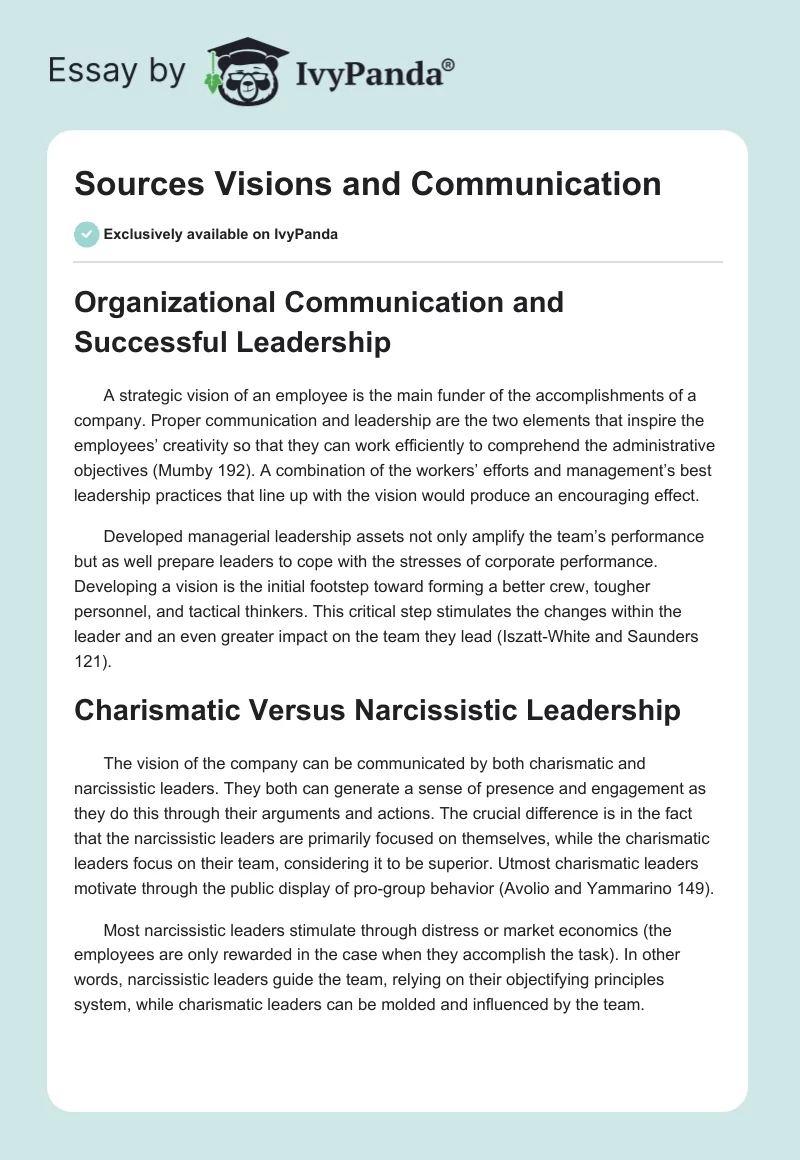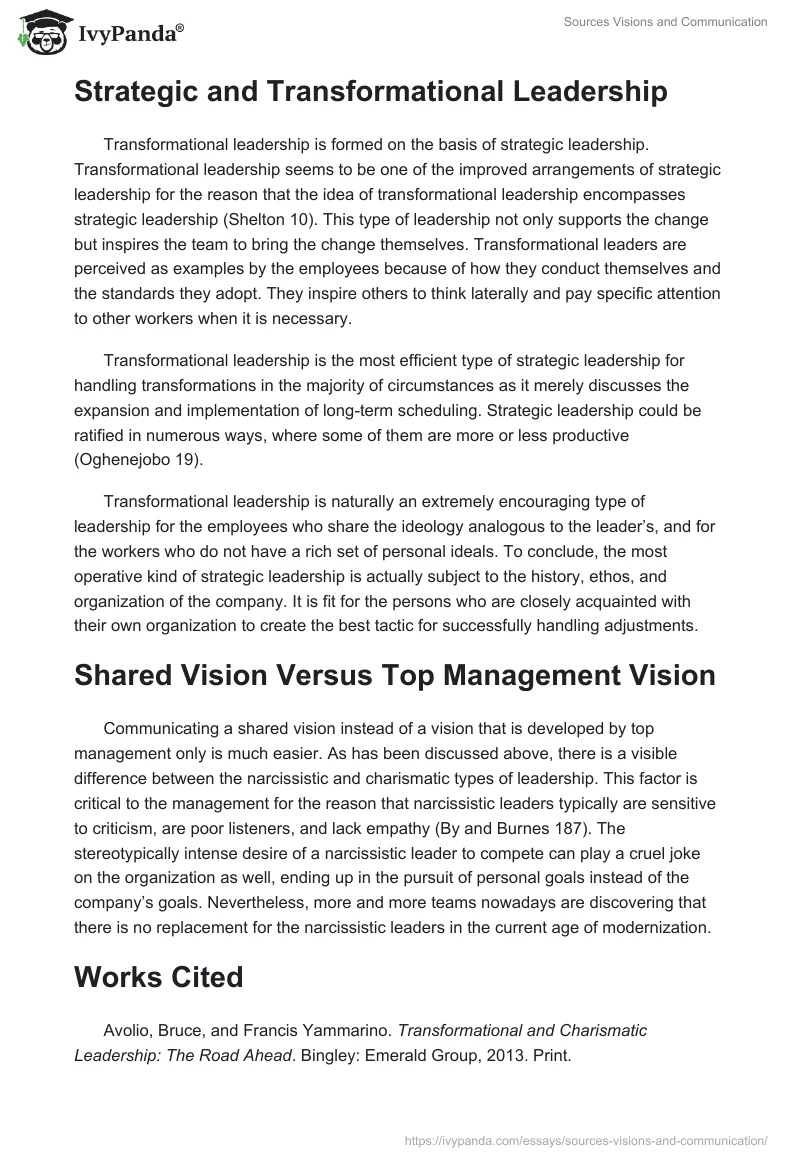Organizational Communication and Successful Leadership
A strategic vision of an employee is the main funder of the accomplishments of a company. Proper communication and leadership are the two elements that inspire the employees’ creativity so that they can work efficiently to comprehend the administrative objectives (Mumby 192). A combination of the workers’ efforts and management’s best leadership practices that line up with the vision would produce an encouraging effect.
Developed managerial leadership assets not only amplify the team’s performance but as well prepare leaders to cope with the stresses of corporate performance. Developing a vision is the initial footstep toward forming a better crew, tougher personnel, and tactical thinkers. This critical step stimulates the changes within the leader and an even greater impact on the team they lead (Iszatt-White and Saunders 121).
Charismatic Versus Narcissistic Leadership
The vision of the company can be communicated by both charismatic and narcissistic leaders. They both can generate a sense of presence and engagement as they do this through their arguments and actions. The crucial difference is in the fact that the narcissistic leaders are primarily focused on themselves, while the charismatic leaders focus on their team, considering it to be superior. Utmost charismatic leaders motivate through the public display of pro-group behavior (Avolio and Yammarino 149).
Most narcissistic leaders stimulate through distress or market economics (the employees are only rewarded in the case when they accomplish the task). In other words, narcissistic leaders guide the team, relying on their objectifying principles system, while charismatic leaders can be molded and influenced by the team.
Strategic and Transformational Leadership
Transformational leadership is formed on the basis of strategic leadership. Transformational leadership seems to be one of the improved arrangements of strategic leadership for the reason that the idea of transformational leadership encompasses strategic leadership (Shelton 10). This type of leadership not only supports the change but inspires the team to bring the change themselves. Transformational leaders are perceived as examples by the employees because of how they conduct themselves and the standards they adopt. They inspire others to think laterally and pay specific attention to other workers when it is necessary.
Transformational leadership is the most efficient type of strategic leadership for handling transformations in the majority of circumstances as it merely discusses the expansion and implementation of long-term scheduling. Strategic leadership could be ratified in numerous ways, where some of them are more or less productive (Oghenejobo 19).
Transformational leadership is naturally an extremely encouraging type of leadership for the employees who share the ideology analogous to the leader’s, and for the workers who do not have a rich set of personal ideals. To conclude, the most operative kind of strategic leadership is actually subject to the history, ethos, and organization of the company. It is fit for the persons who are closely acquainted with their own organization to create the best tactic for successfully handling adjustments.
Shared Vision Versus Top Management Vision
Communicating a shared vision instead of a vision that is developed by top management only is much easier. As has been discussed above, there is a visible difference between the narcissistic and charismatic types of leadership. This factor is critical to the management for the reason that narcissistic leaders typically are sensitive to criticism, are poor listeners, and lack empathy (By and Burnes 187). The stereotypically intense desire of a narcissistic leader to compete can play a cruel joke on the organization as well, ending up in the pursuit of personal goals instead of the company’s goals. Nevertheless, more and more teams nowadays are discovering that there is no replacement for the narcissistic leaders in the current age of modernization.
Works Cited
Avolio, Bruce, and Francis Yammarino. Transformational and Charismatic Leadership: The Road Ahead. Bingley: Emerald Group, 2013. Print.
By, Rune, and Bernard Burnes. Organizational Change, Leadership and Ethics: Leading Organizations Towards Sustainability. Abingdon: Routledge, 2013. Print.
Iszatt-White, Marian, and Christopher Saunders. Leadership. Oxford: Oxford UP, 2014. Print.
Mumby, Dennis K. Organizational Communication: A Critical Approach. London: SAGE Publications, 2013. Print.
Oghenejobo, Mason. Strategic Leadership for Sustainable Personal and Organizational Success. Bloomington, IN: WestBow, 2014. Print.
Shelton, Edward J. Transformational Leadership: Trust, Motivation and Engagement. Bloomington, IN: Trafford, 2012. Print.


